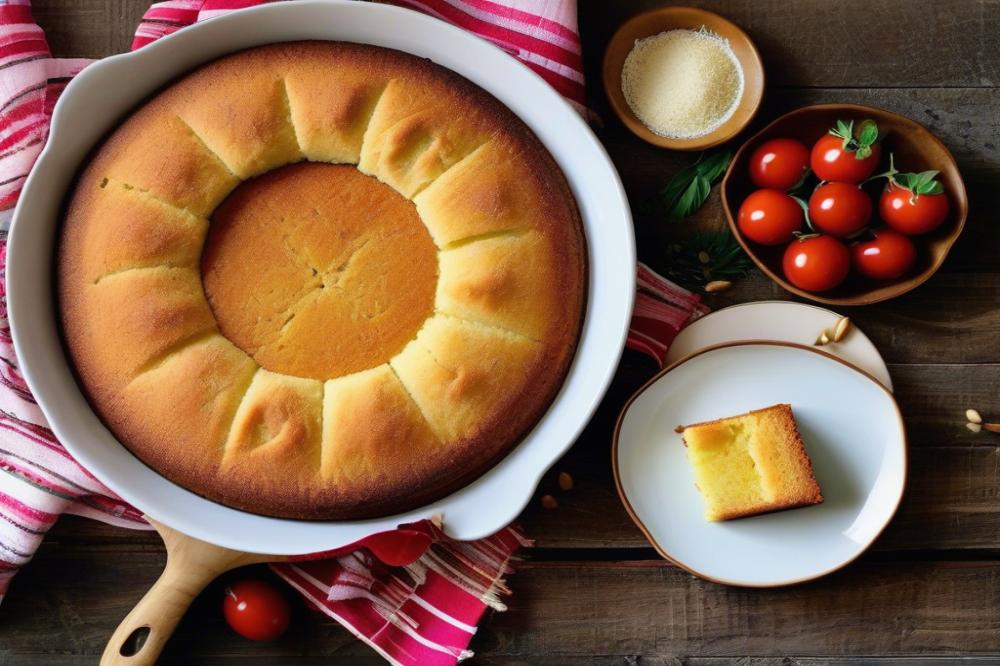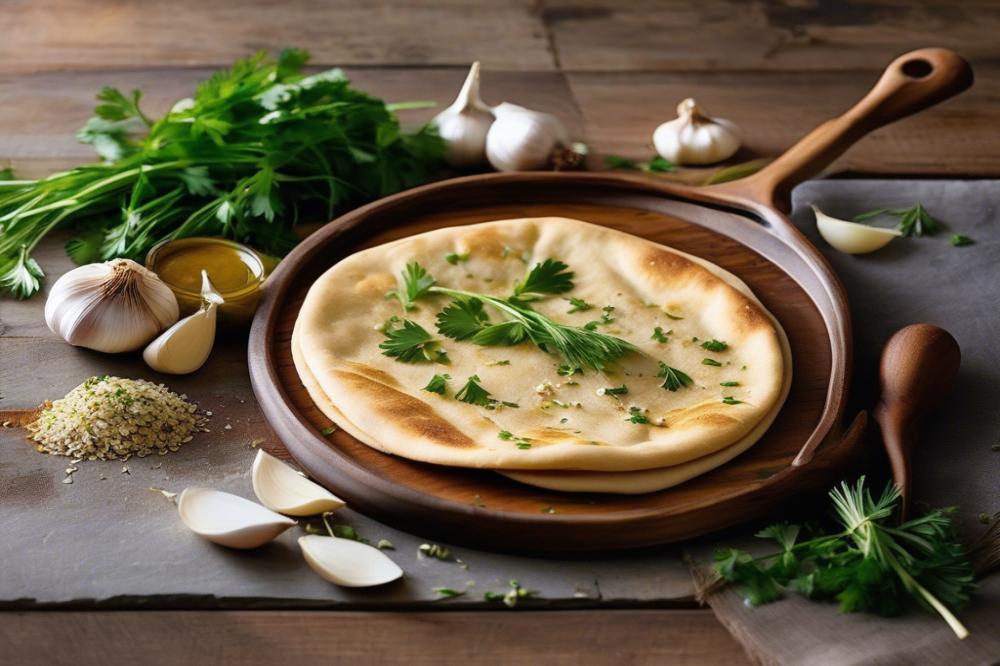Introduction
Sfouf, a delightful Lebanese dessert, stands out in the world of Middle Eastern sweets. This moist cake is known for its distinctive yellow color, derived from turmeric. A traditional Sfouf recipe captures the essence of cultural cuisine, making it cherished in many households. Cooking this Middle Eastern cake holds significance beyond flavor; it represents community and family gatherings. Many enjoy baking it during festive occasions or simply as a comforting treat.
This easy dessert appeals to those looking for a vegan option as well. It uses simple ingredients, making it accessible for bakers of all skill levels. Whether served during special celebrations or as an everyday snack, Sfouf never fails to evoke warmth and nostalgia. The purpose of this article is to guide you through the process of creating this beloved Semolina Cake. Follow the steps closely for a delicious result that reflects the rich heritage of Lebanon.
What is Sfouf?
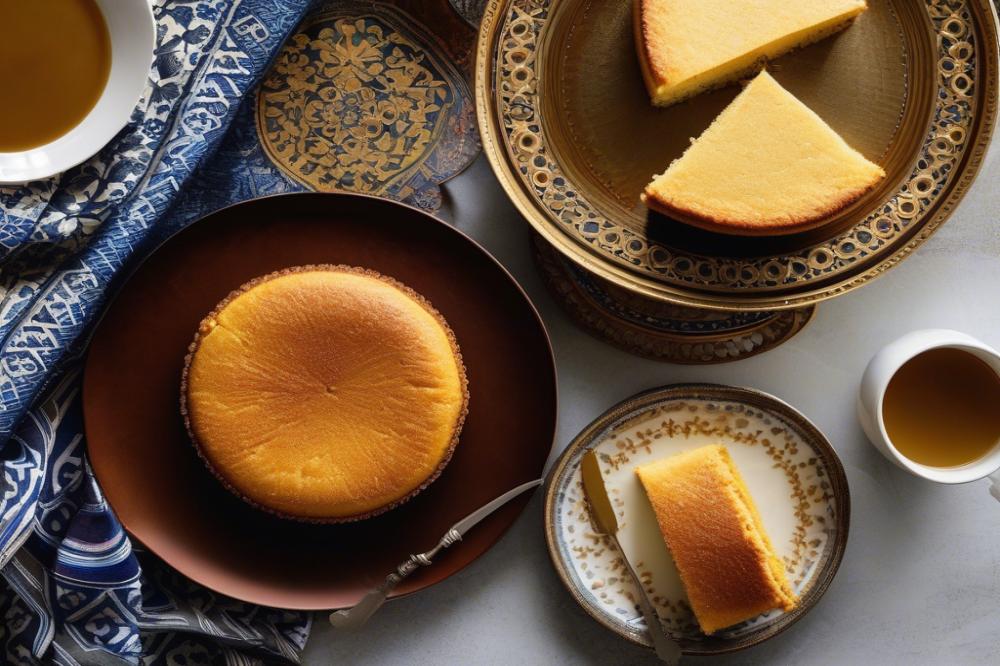
Sfouf is a delightful Lebanese dessert made primarily from semolina. This tasty cake stands out because of its rich flavor and pleasing texture. Among Middle Eastern cakes, it holds a special place due to its moist cake consistency. The vibrant yellow color comes from turmeric, which not only adds beauty but also a hint of warmth to the flavor.
Baking recipes for sfouf often call for simple ingredients, making it an easy dessert option for many. People love its slightly chewy texture, which sets it apart from spongier cakes found in other cultures. While traditional sfouf might seem similar to other confections, its unique blend of flavors creates a different experience.
Typically, this cake is served at family gatherings, special occasions, or during celebrations. In Lebanon, it is enjoyed alongside coffee or tea, providing a perfect balance. Vegan eaters also appreciate it, as the recipe does not require eggs or dairy, allowing everyone to enjoy this sweet treat.
Overall, sfouf is a celebration of cultural cuisine that brings warmth to any table. Cooking it can feel like a little piece of Lebanon coming to life in your kitchen.
Ingredients and Quantities
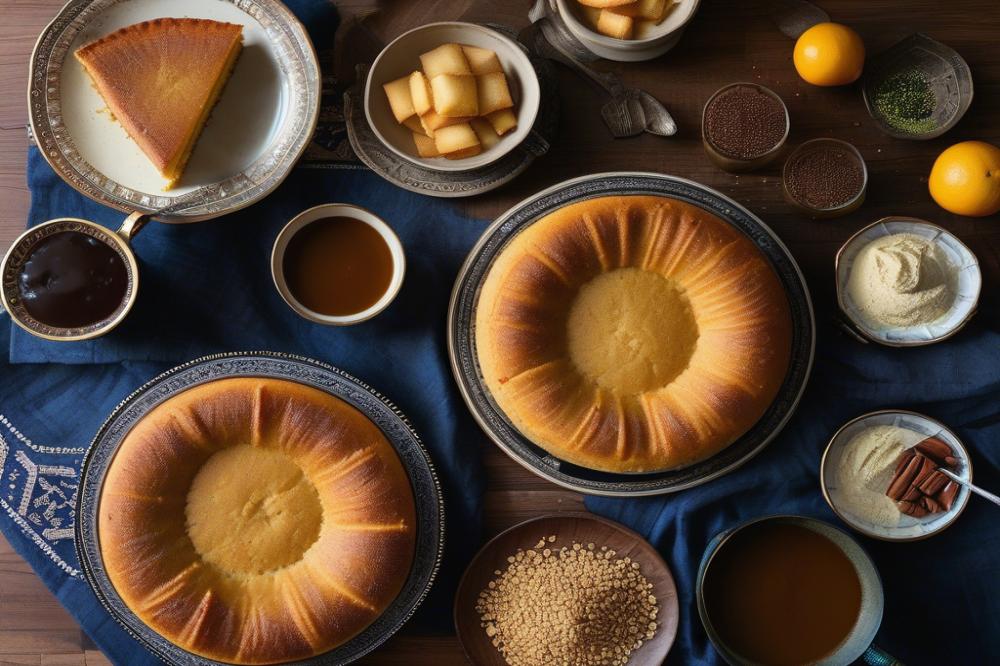
To prepare this Lebanese dessert, gather the following ingredients:
- Semolina: 2 cups
- Sugar: 1 cup
- All-purpose flour: 1 cup
- Baking powder: 1 tbsp
- Turmeric powder: 1 tbsp
- Vegetable oil: 1 cup
- Water: 1 cup
- Vanilla extract: 1 tsp
- Salt: 1/2 tsp
Each ingredient serves a purpose in crafting this moist cake. Semolina provides texture, while sugar adds sweetness. All-purpose flour helps give structure, and baking powder aids in rising. Turmeric is more than just a bright yellow spice; it offers a unique flavor and a health boost. Vegetable oil keeps the cake moist, whereas water balances the mixture. Vanilla extract lends a subtle aroma, and salt enhances the taste, making everything come together.
Nutritional Information for Each Ingredient
Understanding the nutritional benefits can enhance your baking experience. Semolina is rich in carbohydrates, perfect for energy. Sugar, although often scrutinized, offers quick energy too. All-purpose flour contains proteins that contribute to the cake’s structure. Turmeric is known for its anti-inflammatory properties. Vegetable oil is a source of healthy fats, while water is essential for hydration. Vanilla extract adds a delightful flavor, and salt is crucial for enhancing the cake’s overall taste. When considering your diet, remember each ingredient plays a role.
Availability of Simple Ingredients
Finding these simple ingredients is quite easy, even in a regular grocery store. Semolina and all-purpose flour are common staples in many kitchens. Most people have sugar on hand, and vegetable oil is readily available. Baking powder and salt are often found in most pantries without any hassle. Turmeric might be a bit less common, but it’s increasingly found in spice sections. Vanilla extract can also be easily located in the baking aisle. Overall, gathering everything you need for this traditional sfouf should be straightforward.
Highlighting the Vegan Nature of the Recipe
One appealing aspect of this baking recipe is its vegan nature. Each ingredient is plant-based, making it suitable for anyone following a vegan diet. The absence of eggs or dairy ensures its broad appeal as an easy dessert. People can enjoy this Middle Eastern cake without worrying about animal products. This inclusivity makes tfouf not just a treat but a delightful option for diverse dietary preferences.
Instructions for Baking Sfouf
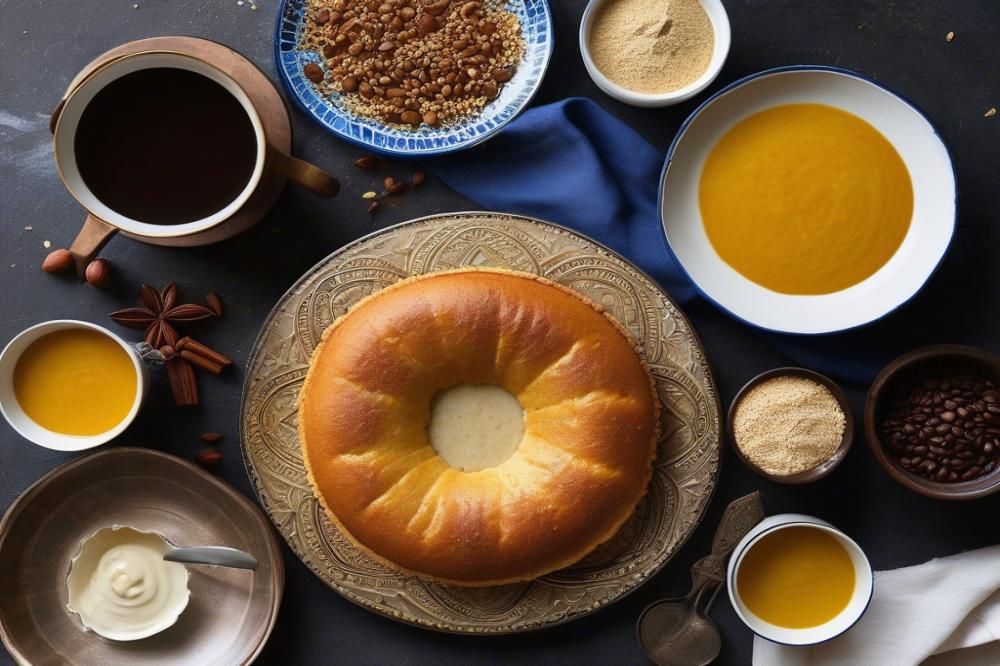
Prepping the Kitchen and Gathering Ingredients
Start by gathering all the ingredients needed for this Lebanese dessert. You will need semolina, flour, sugar, turmeric for color, baking powder, and vegetable oil. Also, get some water and vanilla extract. Create a clean workspace by clearing the countertops. This step sets a solid foundation for your baking adventure. Here’s a tip: measuring cups and spoons can help with accuracy. Preheat the oven to 350°F (175°C) to have it ready for baking.
Mixing Dry Ingredients and Wet Ingredients by Stages
Begin by mixing the dry ingredients in a large bowl. Combine semolina, flour, sugar, turmeric, and baking powder. Stir them together until they are well blended. In another bowl, whisk together liquid ingredients. Combine vegetable oil, water, and vanilla. Mix these until smooth. After that, slowly add the wet mixture to your dry ingredients. Doing it gradually can help with achieving an even texture. Use a spatula to fold the batter gently. Be careful not to overmix; you want a thick batter but not too dense.
Pouring Batter into the Pan and Baking Time
Prepare a cake pan by greasing it lightly with oil. Next, pour the batter into the pan. Spread it evenly with the spatula to ensure uniform baking. Place the pan into the preheated oven. Bake it for approximately 30 to 35 minutes. You can check if it’s ready by inserting a toothpick in the center. If it comes out clean, the cake is perfectly baked.
Cooling and Serving Suggestions
After baking, allow the cake to cool in the pan for about 10 minutes. Then, transfer it to a wire rack for full cooling. When it’s cool, slice it into squares for serving. This Middle Eastern cake can be enjoyed plain or dusted with powdered sugar. Pair it with a cup of tea or coffee to enhance your experience. The flavors balance nicely together.
Tips for Achieving the Perfect Moist Texture
To create a moist cake, remember not to overbake. Keep an eye on the time and perform the toothpick test. Using fresh, high-quality ingredients also matters. Turmeric not only adds color but can enhance flavor as well. If you enjoy variations, consider adding chopped nuts or dried fruits for extra texture. Storing leftovers in an airtight container can maintain moisture. By following these tips, your traditional sfouf will be a delightful treat!
Cultural Significance of Sfouf
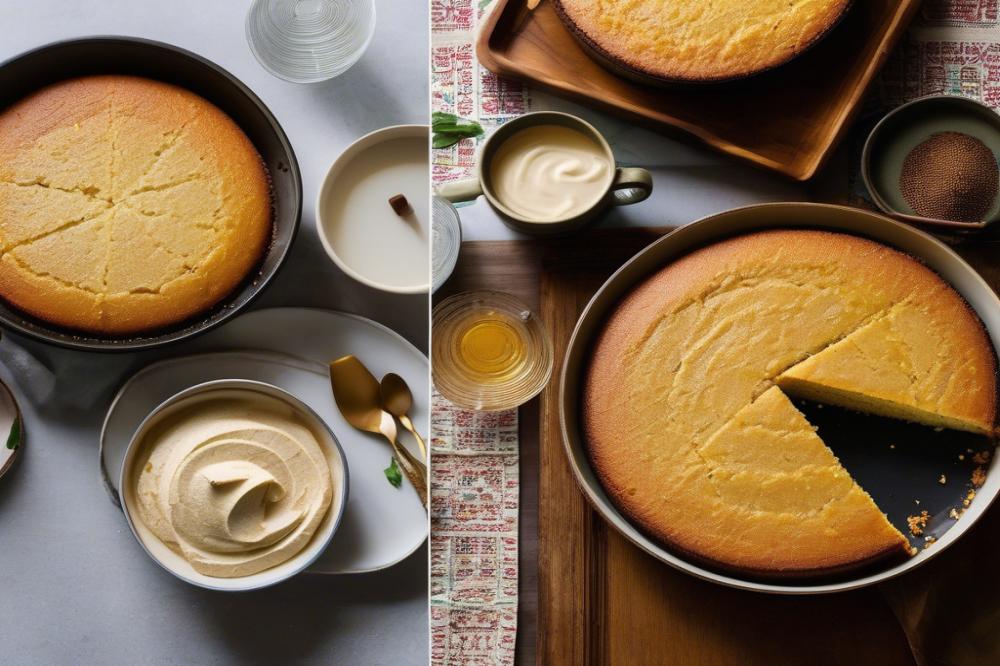
Historical Background of Sfouf in Lebanese Cuisine
Lebanese cuisine has a rich history filled with diverse flavors and traditions. Sfouf stands out as a beloved dessert, often baked for special occasions. The use of tahini and turmeric gives this cake its distinct flavor and vibrant color. Originating during the Ottoman Empire’s influence, this dessert reflects the blending of cultures. Recipes have been passed down through generations, making it an important part of family heritage.
Role of Sfouf in Celebrations and Gatherings
Every celebration in Lebanon often features this moist cake. It is a staple at family gatherings, as well as during religious holidays. Guests enjoy it with coffee or tea, enhancing the social experience. Birthdays and weddings are incomplete without sfouf, symbolizing joy and community. Its ease of preparation makes it a favorite among hosts and hostesses alike.
Stories and Anecdotes Related to Sfouf in Families
Many families share stories about preparing sfouf together. Children often help mix the simple ingredients, creating lasting memories. One grandmother remembers teaching her grandchildren the correct way to fold the batter. Such moments strengthen family bonds, connecting generations through cooking. Each bite of this Lebanese dessert tells a story filled with love and tradition.
Variations of Sfouf in Different Regions of the Middle East
Variations exist across the Middle East. Different regions often add their twist to this cake, showcasing local flavors. Some use different spices, while others experiment with fillings. The joy of making it vegan has gained popularity, catering to all dietary preferences. Regardless of the version, each remains a comforting choice among traditional sweets.
Final Thoughts on Baking Lebanese Semolina Cake
Baking offers a delightful way to connect with different cultures. We’ve walked through the steps needed to create a delicious Lebanese dessert that showcases the rich flavors of semolina and turmeric. Remember to gather all your ingredients and follow the process carefully. Each stage is vital, from mixing the batter to perfecting the baking time.
Trying your hand at this cake can be a rewarding experience. Its simplicity makes it an ideal choice for both novice and experienced bakers. You might find joy not only in creating this dish but also in sharing it with family and friends.
Exploring more Lebanese recipes can further enhance your culinary journey. There are many other delightful dishes waiting to be discovered. From savory to sweet, the variety is endless. Pausing to appreciate these culinary traditions adds depth to your meal preparation.
Embrace the joys of baking cultural cuisine. Each recipe you try brings a new story to life, whether it’s cherished family traditions or intriguing customs from afar. The process can be as important as the end result, sparking creativity and connection in the kitchen. Happy baking!

